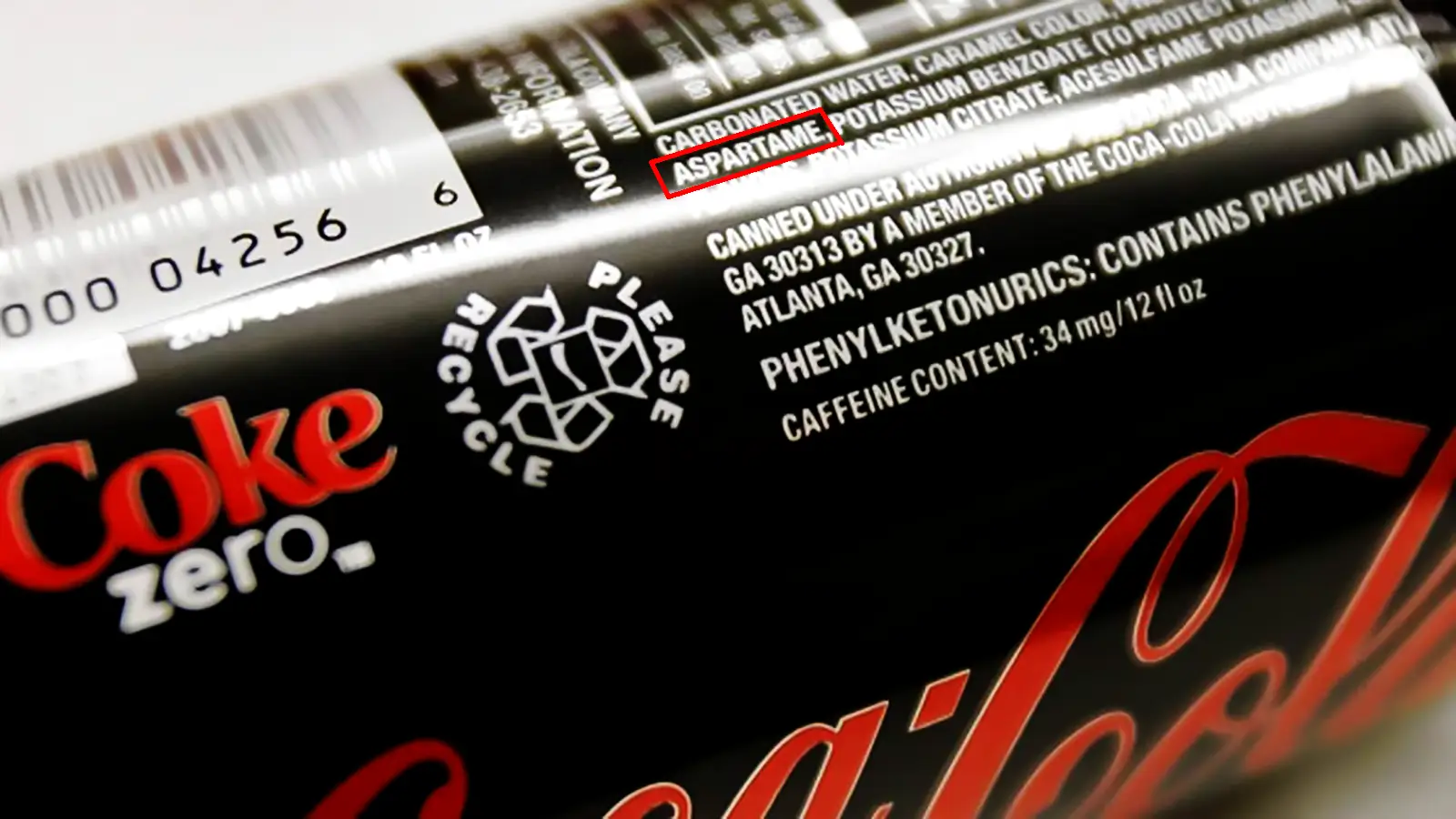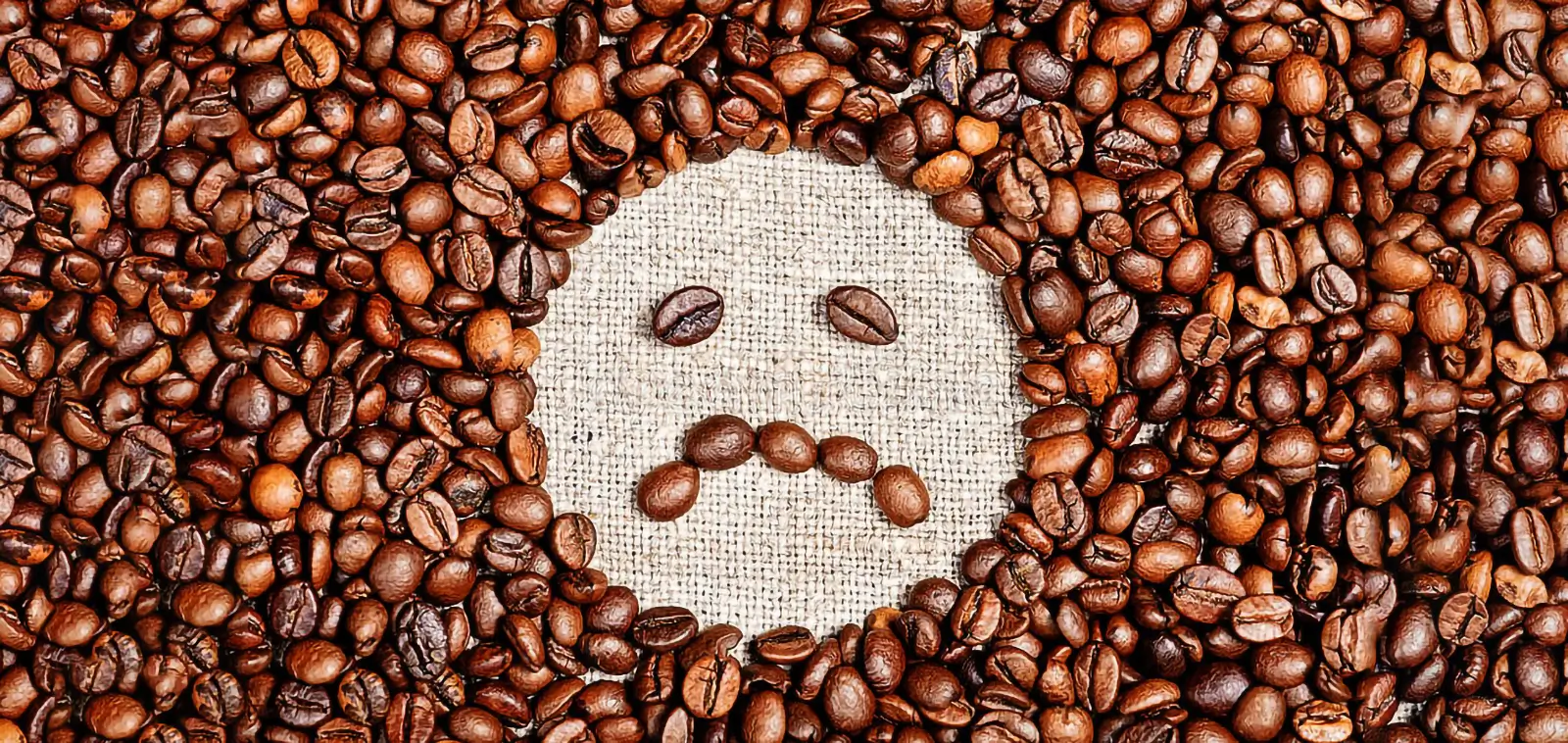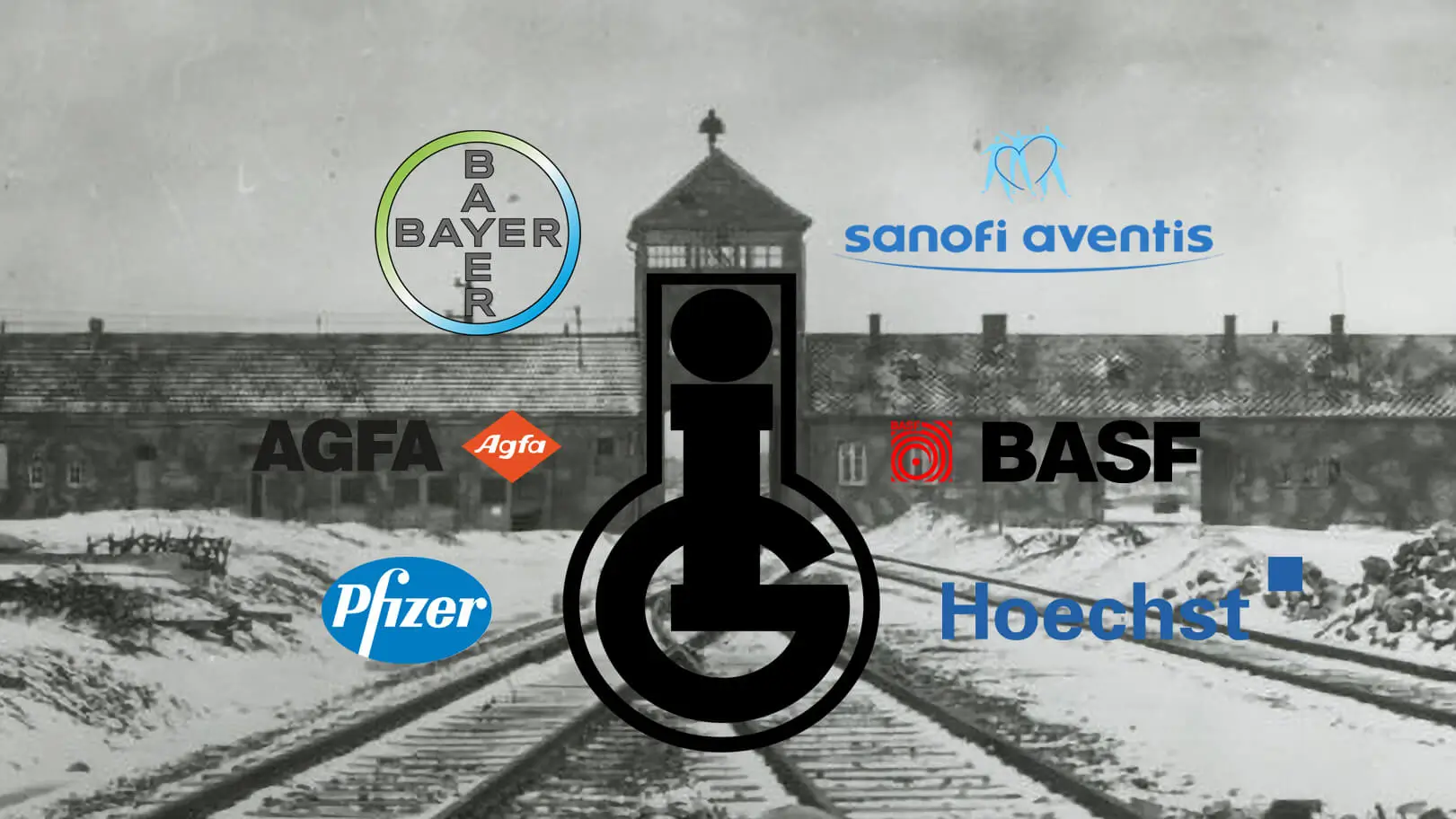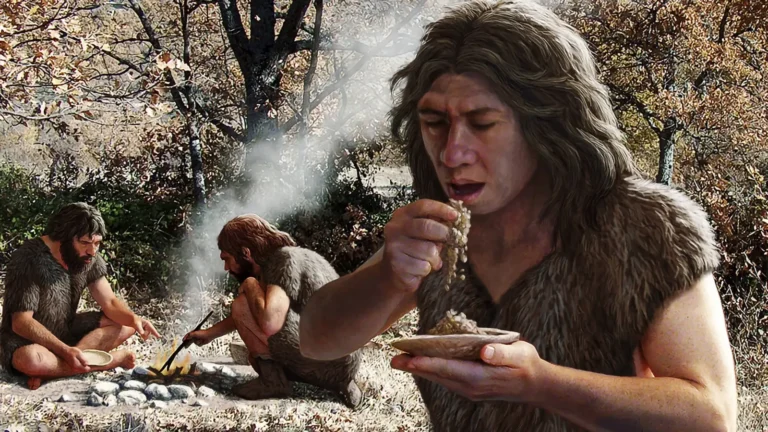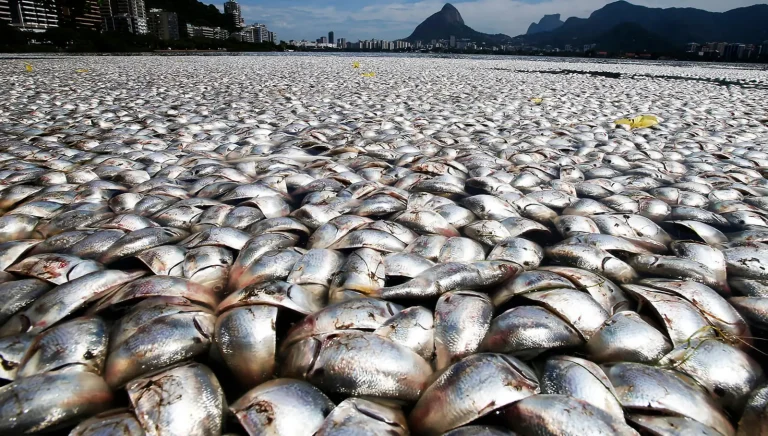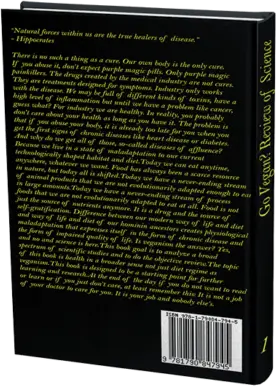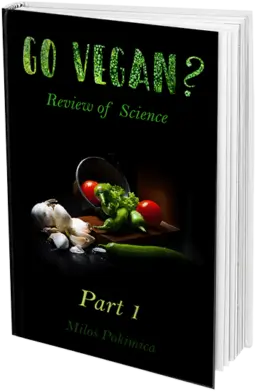A Coca-Cola Company - Revisão Histórica
Se quiser saber qual é o ingrediente secreto do xarope de Coca-Cola. É a Alemanha nazi, esquadrões da morte guatemaltecos, neuromarketing e trabalho infantil.
Milos Pokimica
Escrito por: Milos Pokimica
Revisto Clinicamente Por: Dr. Xiùying Wáng, M.D.
Actualizado em 28 de Maio, 2023Quando as pessoas falam sobre a indústria alimentar, pensam na Coca-Cola e Nestlé. A Coca-Cola e a Nestlé não estão na indústria alimentar. Longe disso. Nestlé é a maior no papel porque a oligarquia não quer que as pessoas regulares saibam qual é a verdadeira forma de conduzir os negócios. Esta é a razão pela qual, ao conceberem estas empresas como a Cargill e outras não emitem qualquer stock público, nem relatórios anuais. É apenas verdadeiro dizer que não sabemos qual é a maior, e não é a Nestlé com certeza. Mais uma vez, como já escrevi antes, estas empresas são mais secretas do que qualquer companhia petrolífera, banco, ou serviço de inteligência governamental. No entanto, mesmo a estúpida Coca-Cola tem o mesmo padrão de comportamento.
Se quiser saber qual é o ingrediente secreto do xarope de Cola.
É a Alemanha nazi, esquadrões da morte guatemaltecos, neuromarketing, e trabalho infantil.
A história da Coca-Cola começou com uma bebida alcoólica chamada Pemberton's French Wine Cola criada pelo farmacêutico John Stith Pemberton, que também era viciado em morfina.
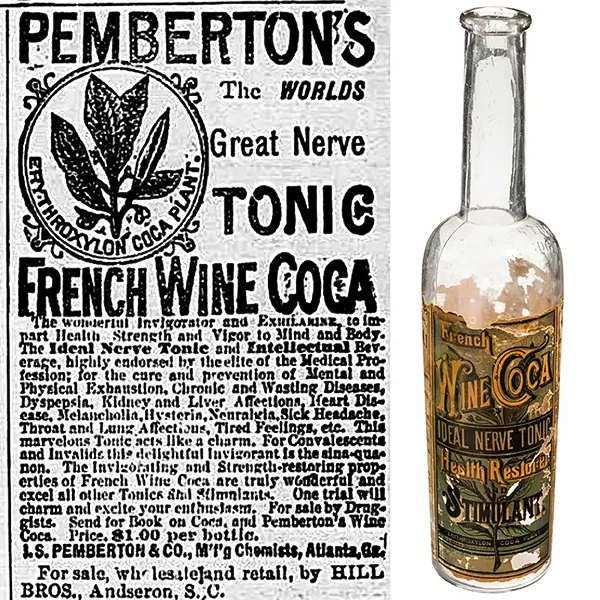
Entre os seus ingredientes estava uma mistura indutora de euforia de álcool e cocaína chamada cocaetileno. A bebida comercializada como estimulante sexual e “o mais maravilhoso revigorante dos órgãos sexuais’ foi proibida após novas leis de temperança em 1885. Pemberton substituiu o vinho por xarope de açúcar e lançou um novo produto em 1886. Foi comercializado como um ’tónico cerebral ideal“. A Coca-Cola continuou a conter cocaína até 1903, quando a empresa cedeu aos receios dos brancos quanto ao aumento do consumo de cocaína entre os afro-americanos. Segundo a história, os afro-americanos passaram a ”cheirar“ desde que foram privados do uísque pela proibição como uma “nova ameaça do sul“. Graças à Coca-Cola, os afro-americanos tiveram acesso à cocaína em números crescentes, pois a bebida tornou-se barata e era vendida por cinco centavos cada com a introdução das garrafas em 1899. No entanto, levou mais algum tempo e a Coca-Cola em todos os lugares ficou completamente livre de cocaína em 1929, mas ainda era infundida e continua a ser infundida até hoje com extrato de folha de coca para fins de sabor.
A Coca-Cola é a única empresa no mundo, bem na verdade a Stepan Company a diferente, mas pelo interesse de fazer com que a Coca-Cola seja a única empresa autorizada pelo governo a importar e processar folhas de coca. A Stepan Company importa folhas principalmente da América do Sul de países como o Peru e a Colômbia. E tudo isto é legal.
Se a Coca-Cola consegue estabelecer parcerias para trazer folhas de coca para os Estados Unidos, por que o resto de nós não consegue?
Existem leis diferentes para pessoas diferentes? Se eu viajasse para o Peru e tentasse ir para os EUA com um pequeno lote de folhas de coca (talvez para fazer chá), seria detido por funcionários fronteiriços. A coca-cola tem sem dúvida gostado desta forma porque a competição pelas folhas de coca faria subir os preços, o que nunca é bom para os negócios.
Se quer realmente saber porque é que a cocaína é a droga mais cara no mercado negro, é por causa da Coca-Cola que precisa de centenas de toneladas de folhas anualmente.
O xarope é produzido apenas nos EUA e depois enviado para todo o mundo devido ao seu “ingrediente secreto”. Como é possível que refrigerantes genéricos como o 7-up ou o refrigerante de uva, por exemplo, consigam enganar o nosso paladar, mas encontrar um refrigerante genérico capaz de imitar a grandiosidade da Coca-Cola continue sendo praticamente impossível? Esse é o ingrediente secreto da Coca-Cola. A razão maluca pela qual nenhuma empresa consegue realmente imitar o sabor da Coca-Cola. Porque o extrato da folha de coca é um ingrediente que nenhuma outra empresa no mundo pode comprar. E fazer negócios com esquadrões da morte guatemaltecos para matar líderes sindicais no final dos anos 70 e ser pioneira no supersizing da América é apenas um bónus adicional.
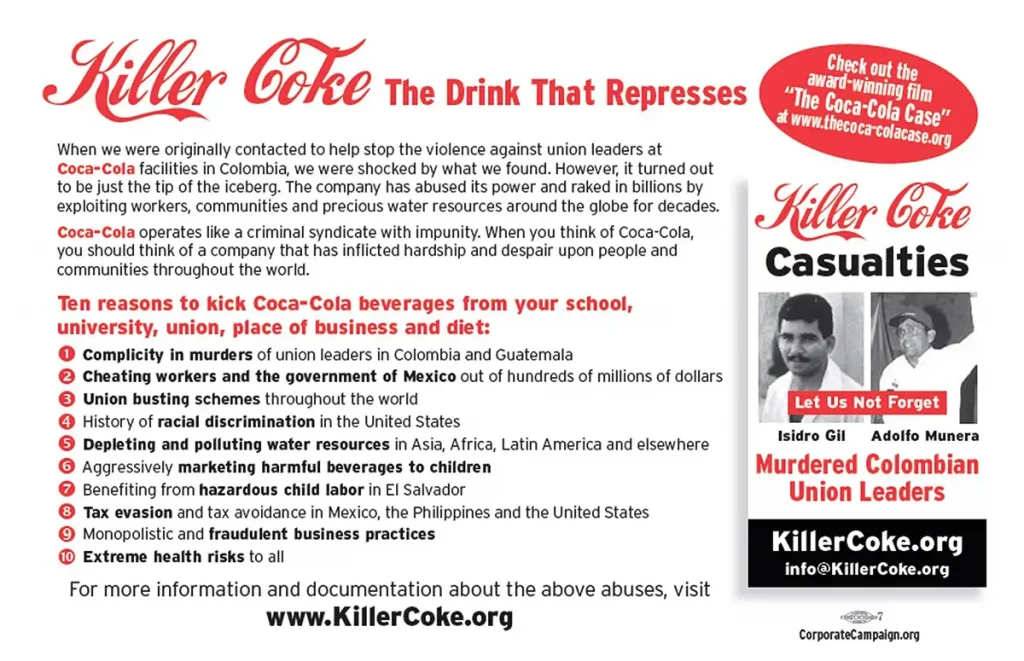
Em 2001, foi instaurado um processo em nome do Sindicato Colombiano dos Trabalhadores da Indústria Alimentar Sinaltrainal (Sindicato Nacional dos Trabalhadores da Alimentação) no Tribunal de Recurso do Terceiro Distrito da Florida, exigindo uma compensação monetária de 500 milhões de dólares pela morte de nove trabalhadores, membros do Sindicato Nacional dos Trabalhadores da Indústria Alimentar que trabalhavam na fábrica da Coca-Cola Bebidas y Alimentos em Carepa, no norte da Colômbia. Tal como o "incidente" guatemalteco, não foi suficiente.
Acusaram a Coca-Cola e os seus parceiros de engarrafamento colombianos de utilizar esquadrões paramilitares da morte para assassinar, torturar e raptar líderes sindicais.
O processo alegava que a empresa contratou militantes das Forças Unidas de Auto-Defesa da Colômbia (AUC) para assassinar nove membros do sindicato, incluindo Isidro Segundo Gil que foi morto a tiro dentro da fábrica da Coca-Cola. O acesso físico que os paramilitares tiveram de engarrafar plantas é impossível sem o conhecimento da empresa porque todas as fábricas da Coca-Cola têm câmaras e segurança privada. O juiz federal José E. Martinez fez avançar o processo contra dois engarrafadores da Coca-Cola: Bebidas y Alimentos e Bebidas Pan-Americanas, mas não contra a Coca-Cola em si. O juiz Martinez rejeitou mais tarde as restantes reclamações contra os dois engarrafadores, em parte porque as fábricas colombianas de engarrafamento não eram propriedade da empresa Coca-Cola.
Os responsáveis de relações públicas não querem que a sua marca seja manchada, por isso gostam de confundir o tópico de qualquer forma. A Coca-Cola diz que os assassinatos dos membros do sindicato colombiano não são da sua responsabilidade porque não são empregados directamente pela Coca-Cola. A razão pela qual a Coca-Cola tem outras empresas a engarrafar o produto em diferentes países em todo o mundo é exactamente esta.
Estão a abdicar de alguns pequenos cortes nos lucros em troca de uma negação plausível. Estratégia bem concebida.
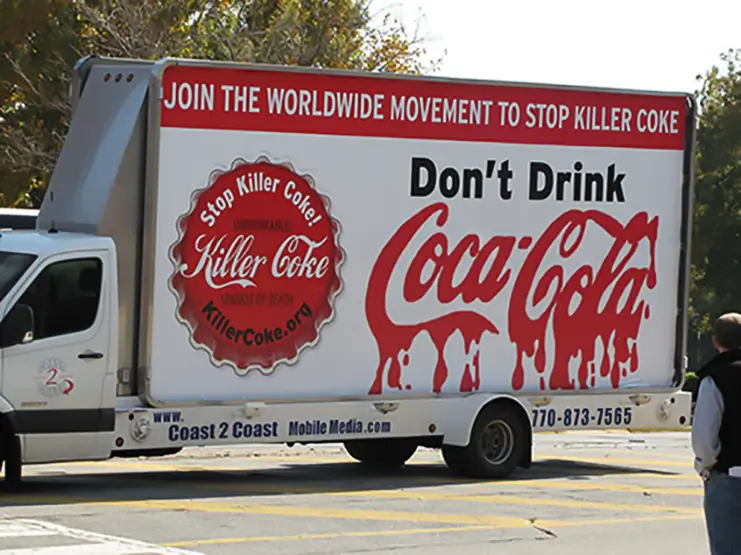
Eles não querem ser arrastados para o tribunal se algo acontecer, e isso não questiona realmente o dinheiro para eles. Trata-se de imagem de marca e marketing. Eles estão a vender o sonho. Até o Pai Natal vermelho é a sua invenção. Algumas pesquisas e exames ao cérebro descobriram que, por exemplo, quando os americanos viajam, e não se sentem "seguros" em algum país do terceiro mundo. Quando vêem o sinal da Coca-Cola, este tem um efeito calmante sobre eles. É porque desde muito cedo foram condicionados a associar bons sentimentos com o símbolo da Coca-Cola.
Descobriu-se que a própria Coca-Cola fez uma extensa investigação sobre algo chamado neuromarketing.
As pessoas de marketing gostam de lhe chamar botão para comprar. Subconscientemente condiciona o comportamento através da associação. Nunca foi o caso de estar apenas a beber um fluído de cola adocicado chamado Coca-Cola. O sabor e a percepção do mesmo é uma percepção composta que o seu cérebro constrói a partir de muitos pedaços de coisas, incluindo as emoções que estão associadas subconscientemente com a mensagem da marca e outras coisas a que a mensagem da marca foi associada. As marcas têm de facto um gosto.
Exemplos de neuromarketing são “Taste the feeling” (Prove a sensação) e “Open happiness” (Abra a felicidade).
Abaixo está o instantâneo da Neuro-Insight mostrando como o cérebro dos espectadores reage ao anúncio do Pool Boy (www.adnews.com.au/news/applying-neuroscience-to-cannes-winning-work-coca-cola-pool-boy).

Na realidade, a violência, o abuso e a exploração foram também revelados em muitos outros países, nomeadamente na China, El Salvador, Guatemala, Índia, México, e Turquia. Em extensão à exploração de trabalhadores, a Coca-Cola tem sido implicada na exploração de crianças, beneficiando de trabalho infantil perigoso nos campos de cana-de-açúcar em El Salvador e sugando todas as águas subterrâneas na Índia, criando uma catástrofe para os aldeões locais.
São necessários dois litros de água para produzir um litro de Coca-Cola. Em 2004, a Human Rights Watch afirmou que, se a Coca-Cola quisesse evitar a cumplicidade no trabalho infantil, deveria reconhecer a sua responsabilidade de respeitar os direitos humanos. Acima de tudo, a Coca-Cola preocupa-se com a imagem e vai gastar mais de dois mil milhões de dólares em marketing para convencer as pessoas de que “a vida tem um sabor bom”. Graças, em parte, às campanhas de marketing da Coca-Cola, o aumento do tamanho das O problema da obesidade americana e os seus resultados levaram a uma situação em que os refrigerantes açucarados desprovidos de nutrição são uma das principais fontes de calorias na dieta americana.
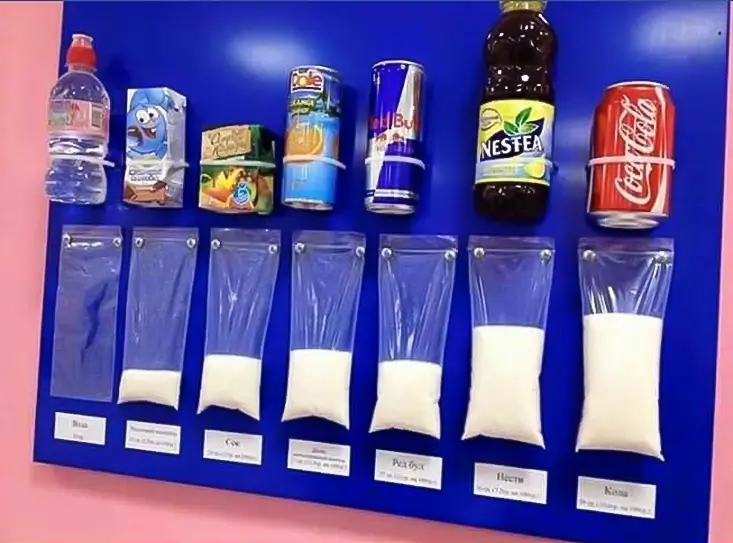
Na América, mais de 80 por cento dos reclusos em fila de morte pedem Coca-Cola para a sua última refeição.
Também quando comercializa refrigerantes que contêm cafeína como a Coca-Cola a crianças pequenas, está a viciá-las nos estimulantes desde cedo.
A cafeína (que é uma neurotoxina) pode ter um efeito prejudicial no desenvolvimento cerebral infantil. Não se trata apenas de uma questão de obesidade. Cada lata de 330 ml de Coca-Cola contém 34,5 mg de cafeína e a Coca-Cola diet contém ainda mais. Isso é suficiente para estimular o desejo e alterar o comportamento de um adulto, mas se der Coca-Cola a crianças, elas tornar-se-ão hiperativas e viciadas. O cérebro das crianças tem maior sensibilidade aos efeitos da cafeína do que o cérebro dos adultos. A cafeína pode torná-las hiperativas imediatamente após a ingestão, o que é óbvio, e há cafeína em excesso açúcar refinado no coque, dando-lhes também uma explosão de energia. No entanto, pode também torná-los nervosos, e ansiosos, agravar os problemas estomacais e criar problemas de sono a longo prazo. As evidências não mostram que a cafeína provoca o crescimento de acrobacias, mas pode torná-los viciados nela. O que acontece é a mesma coisa que acontece nos adultos. Em casos de uso diário de Coca-Cola infundida com cafeína, compensa na expectativa de toxina e até a criança beber está com nevoeiro cerebral, baixa energia, problemas de atenção, e pode ficar nervosa. O mesmo que qualquer outro toxicodependente viciado em anfetaminas. Se alguém tem uma predisposição para a ansiedade, pode agitar a situação, criando um comportamento de tipo neurótico e stress crónico. As crianças que têm dificuldades de atenção como a adição (Transtorno do Déficit de Atenção) e o Transtorno de Hiperactividade do Déficit de Atenção (TDAH) devem evitar quaisquer estimulantes como a cafeína. Uma combinação de cafeína, açúcar, e excitotoxinas como aspartame e glutamato monossódico (msg) pode exubmeter sintomas em crianças que já estão do lado da ADD numa doença total. À criança seria prescrito o verdadeiro medicamento à base de anfetaminas chamado Ritalina. As crianças sofrerão efeitos de abstinência tal como os adultos se não a tiverem, no mínimo uma dor de cabeça. Trata-se de uma grave questão de saúde pública.
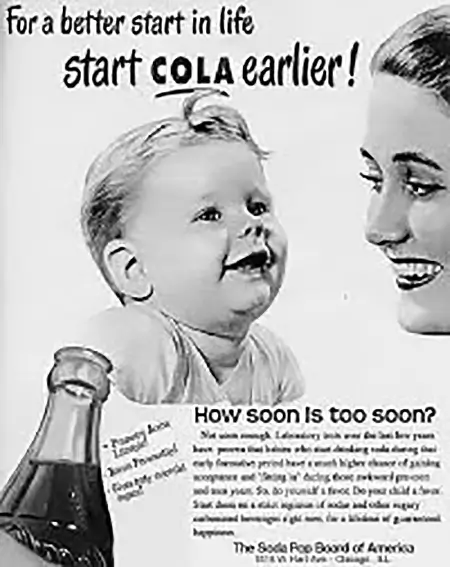
Para agravar o problema destas bebidas com cafeína, há o facto de muitas delas serem ricas em açúcar. Isso é má nutrição. Se tem um filho que bebe mais do que uma bebida açucarada por dia, ele está a caminho da obesidade. Como não há fibras para retardar a digestão, o açúcar no sangue aumenta rapidamente e, em seguida, cai drasticamente, causando hipoglicemia. E a criança vai procurar outra Coca-Cola. Quanto mais cedo o cérebro do seu filho se tornar viciado em estimulantes como cafeína e açúcar refinado, mais cedo a obesidade começará e mais provável será que ela o acompanhe até a idade adulta.
E a indústria adora-o. Beber bebidas açucaradas com cafeína é formar o hábito.
É muito inteligente colocar cafeína numa bebida açucarada e depois comercializá-la às crianças. Também dada a investigação que tem sido realizada em modelos animais, é possível que o uso habitual de cafeína possa levar à sensibilização cruzada do substrato de recompensa neural para drogas ilícitas, o que constitui um problema para além da obesidade. Se der Coca-Cola aos seus filhos, então não acredite apenas em mim, faça a sua própria investigação e veja o que é melhor para si. Pode ler esta análise se quiser (Templo, 2009).
Achamos que a Coca-Cola não sabe disso? A cafeína sempre esteve na fórmula, não “apenas“ a cocaína. Dois ingredientes básicos que estão gravados no nome Coca-Cola são as folhas de coca e a noz de cola. A noz de cola contém cafeína. Quando retiraram a cocaína, mantiveram na fórmula o segundo melhor estimulante legal que podem usar, a cafeína.
A Coca-Cola afirma que a cafeína é parte integrante do seu complexo sabor, mas isso é uma mentira. A cafeína não tem sabor.
Não podemos distinguir entre bebidas com cafeína e sem cafeína. Ela existe para modificar o comportamento do consumidor. A Coca-Cola disse uma vez que capturar consumidores do ensino secundário significava mantê-los durante 50 a 60 anos. O seu verdadeiro alvo que eles querem "capturar" são na realidade crianças.
A Coca-Cola quer comprar um mundo de Coca-Cola e porquê? Bem, eles dizem que querem espalhar a paz, o amor e a fraternidade a todos. No entanto, na realidade utilizaram a 2ª Guerra Mundial para estabelecer o domínio num mercado global.
Após o ataque a Perl Harbor na extensão do governo dos EUA, o que significa dinheiro dos contribuintes, os empregados de Coca-Cola vestiram-se com uniformes do exército e inventaram completamente o nome de observadores técnicos. Depois foram enviados em todo o mundo para estabelecer 64 fábricas de engarrafamento atrás das linhas. Este plano de acção posicionou-os para se expandirem e conquistarem todos os mercados e tornaram-se monopolistas em todas as economias devastadas pela guerra.
Com a ajuda dos militares americanos, expandiram-se para se tornarem o líder global na produção de refrigerantes pouco depois da Segunda Guerra Mundial.
Leia novamente esta frase.
Com a ajuda dos militares americanos, expandiram-se para se tornarem o líder global na produção de refrigerantes pouco depois da Segunda Guerra Mundial.
Quando o interesse privado controla a conduta de um governo supostamente eleito democraticamente e do exército, trata-se de uma definição directa de fascismo.
Hoje pode estar em qualquer parte do planeta excepto na Coreia do Norte e em Cuba e obter uma Coca-Cola mesmo ao virar da esquina, mesmo em lugares onde não há água potável ou electricidade. A Coca-cola também não teve problemas com os nazis. Foi um dos três patrocinadores oficiais da bebida dos Jogos Olímpicos de Verão de 1936 em Berlim.
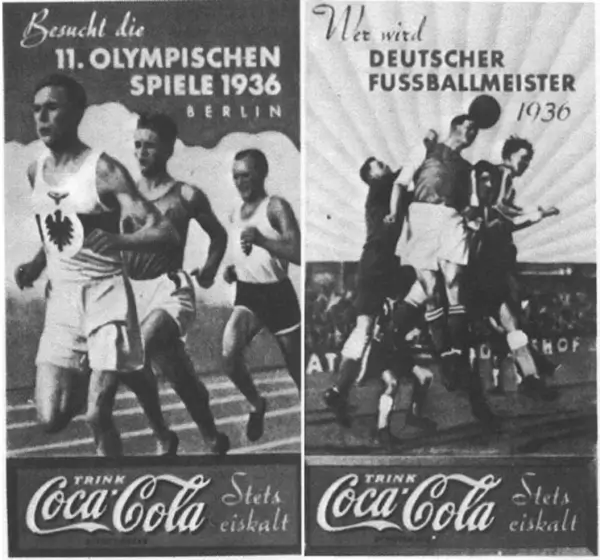
Publicidade, engarrafamento e expansão rápida para cobrir todo o mercado alemão sob Hitler. As empresas americanas reconstruíram a Alemanha após a Segunda Guerra Mundial e apoiaram o regime nazista inicial e, quando a guerra eclodiu, encontraram uma maneira de manter os negócios funcionando. A General Motors conseguiu manter a Opel (uma subsidiária 100% detida pela GM) e continuar a fabricar basicamente a maioria dos tanques alemães que foram usados na guerra. A General Motors foi notavelmente mais significativa para a máquina de guerra nazi do que a Suíça. O “inimigo” conduzia camiões fabricados pela Ford e pela Opel e pilotava aviões de guerra construídos pela Opel. A Ford conseguiu manter o seu negócio em funcionamento. Já sabemos sobre a Standard Oil e a IG Farben. Elas mantiveram os seus negócios. A IBM conseguiu manter os seus negócios e continuar a produzir computadores para campos de extermínio. Os nazis usavam-nos em Auschwitz e noutros locais para rastrear prisioneiros judeus (as máquinas de cartões perfurados Hollerith parecem mais máquinas de escrever do que computadores). A pedido dos nazis, a IBM inventou o censo nacional. Milhares de pessoas foram contratadas pela IBM e colocadas num armazém gigante. As pessoas iam de porta em porta e preenchiam formulários do censo, incluindo religião e residência. Todas essas informações eram inseridas em cartões perfurados. Todos os bancos também usavam cartões perfurados da IBM, então a confiscação de propriedades e negócios era muito fácil. A tatuagem de Auschwitz é número IBM. A IBM também desenvolveu um programa especial a pedido do regime nazi, através do qual todas as competências foram colocadas num único conjunto de cartas, de modo a que pudessem comparar isso com os locais onde é necessário trabalho escravo, para que possam trabalhar prisioneiros até à morte perante a câmara de gás.
No entanto, e quanto a empresas como a Coca-Cola? Como precisavam do seu “ingrediente secreto” na forma de extrato de folha de coca, não podiam continuar com o seu negócio. Então, o que fizeram foi inventar uma nova bebida que pudessem produzir com ingredientes locais fabricados na Alemanha. Essa bebida foi a Fanta Laranja para os alemães.
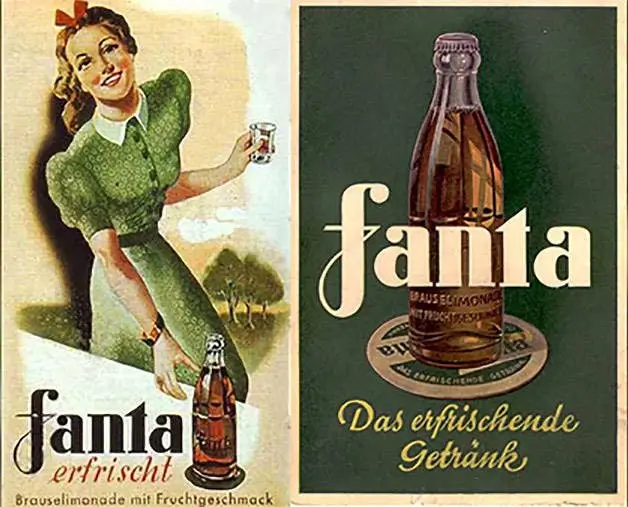
O nome Fanta vem da palavra alemã para fantástico. Na época em que os nazis chegaram ao poder, em 1933, os negócios da Coca-Cola na Alemanha já estavam em alta. A liderança de um homem chamado Max Keith ajudou a empresa a se adaptar e expandir sob o regime nazista. Ele renovou a marca Coca-Cola no país e impulsionou as vendas antes mesmo do regime nazista. A cola era bem conhecida e aceita para beber tanto quanto nos Estados Unidos. Quando Adolf Hitler ascendeu ao proverbial trono em 1933, as vendas da Coca-Cola tinham aumentado de 6.000 caixas por ano para 100.000. Quando os nazis chegaram ao poder, não foi problema para a Cola fazer negócios com eles também. Não tinham qualquer problema com a ideologia racista nazi, desde que pudessem fazer muitas vendas. Durante os Jogos Olímpicos de Berlim de 1936, por exemplo, Keith garantiu que os participantes tivessem toda a Coca-Cola que quisessem. No entanto, os interesses da Coca-Cola Company foram prejudicados mais tarde naquele ano, quando o regime nazista começou a restringir seriamente as importações de países estrangeiros para proteger a economia alemã, e na lista estava o xarope da Coca-Cola como um produto não alemão.
No entanto, o diretor da Coca-Cola Company comunicou-se por meio de terceiros para convencer Hermann Göring, o segundo no comando de Hitler, a permitir a importação desse xarope. Nesse momento, a Cola estava a lidar diretamente com os nazistas politicamente. Campanhas publicitárias trabalharam para convencer a população consumidora de cerveja de que bebidas gaseificadas eram uma alternativa para os trabalhadores durante o expediente, e slogans incentivavam a força de trabalho industrial a largar as ferramentas e beber uma refrescante garrafa de Coca-Cola.
Sempre que o ministro da propaganda Joseph Goebbels reservava o Sportpalast para exibições em massa de cartazes de retórica da Coca-Cola apareciam no exterior, mesmo onde os fiéis do Partido faziam fila. Pouco depois, em 1937, a Coca-Cola levou um golpe extra nas suas tentativas de vender os seus produtos na Alemanha, quando um funcionário alemão de uma empresa de refrigerantes rival, Afri-Cola, começou a distribuir fotos de tampas de garrafas de Coca-Cola dos EUA que mostravam as personagens hebraicas identificando-a como Kosher.
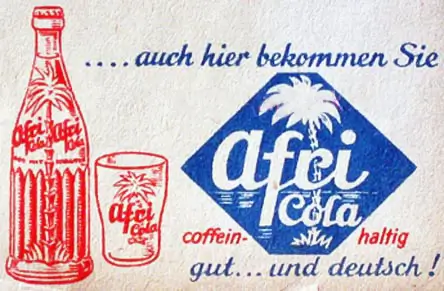
Utilizaram isto como prova para afirmar que um judeu dirigia secretamente a Coca-Cola Company. Um engarrafador de água de nascente da Baviera que sofria de perda de lucros também entrou em acção, escrevendo para o Ministério da Alimentação e Agricultura em Berlim para opinar que
“Seria interessante saber se o capital judeu está presente na Coca-Cola GmbH.”
As vendas despencaram e o quartel-general nazista cancelou as encomendas, obrigando Keith a negar qualquer ligação com os judeus num anúncio publicado no jornal de propaganda do partido, Der Stuermer. Aqui estão alguns exemplos de primeira página onde a Cocke tinha os seus anúncios de neuromarketing “sinta a sensação”.



Para contrariar ainda mais esta noção, e a consequente perda de lucros dos consumidores alemães, Keith começou a marcar agressivamente a Coca-Cola Company na Alemanha como pró-Nazi.
Numa convenção nazista, durante uma celebração, Keith ordenou um “Sieg Heil” em massa em homenagem ao 50.º aniversário de Hitler, para comemorar
“A nossa mais profunda admiração e gratidão pelo nosso Führer, que conduziu a nossa nação a uma esfera superior brilhante.”
Também se dirigiu especificamente à Juventude Hitleriana, tentando conquistar a geração mais jovem dos nazis como uma política padrão da Coca-Cola de marketing para crianças, a fim de as tornar viciadas em tenra idade. Numa ocasião no Reichsausstellung Schaffendes Volk em Dusseldorf, uma exposição que celebrou as conquistas do trabalhador alemão sob o regime nazi, a Coca-Cola entrou na planta deste festival de propaganda com um comboio em miniatura para as crianças, uma fábrica modelo de engarrafamento que podia lavar, tapar e encher 4.000 garrafas por hora e um balcão de serviço de 16 metros de comprimento vendendo Coca-Cola gelada aos apostadores estupefactos. No meio do espectáculo, o próprio Hermann Göring fez uma pausa para desfrutar de um copo fresco do material castanho, um momento captado por um fotógrafo da empresa.
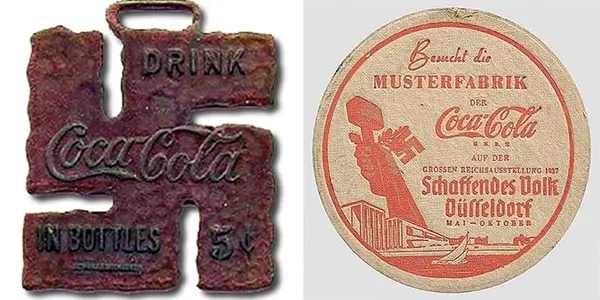
Com a guerra a desenvolver-se na Europa, Keith temia que o seu negócio ligado ao estrangeiro pudesse ser nacionalizado e que fosse atirado para a cadeia. Com as suas ligações no Terceiro Reich, foi nomeado supervisor de todas as fábricas de refrigerantes na Alemanha e de todos os seus territórios conquistados. Logo geriu a empresa na Itália, França, Holanda, Luxemburgo, Bélgica, e Noruega. Na altura, o Coque vendia anualmente cerca de 4,5 milhões de caixas na Alemanha nazi. No entanto, em 1940, com o avanço da 2ª Guerra Mundial, Keith começou a preocupar-se com as limitações à importação. Por preocupação, ele produziu um novo xarope a partir de ingredientes locais para ser utilizado se não conseguissem ter acesso ao xarope oficial de Coca-Cola da América. Para conjurarem uma nova bebida, utilizaram fibras de maçã cultivadas em casa que sobravam do processo de fabrico da sidra e do soro de leite.
No início, com uma oferta cada vez menor de Coca-Cola, Keith trabalhou para garantir que os seus refrigerantes só fossem para hospitais para soldados feridos que fossem particularmente membros do Partido Nazi.
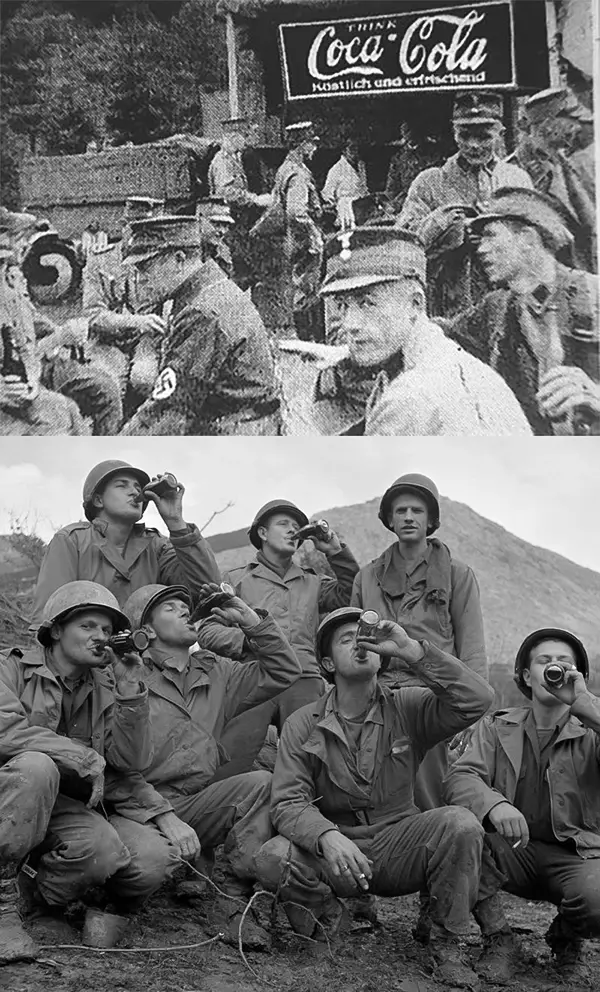
Quando ficaram completamente sem Coca-Cola, a empresa começou a vender a Fanta, o que foi um sucesso entre a população alemã. Em 1941, Keith utilizou as suas ligações políticas para contornar a proibição do açúcar. A Fanta sabia melhor do que as bebidas rivais e tornou-se muito popular. As donas-de-casa até saboreavam sopas e guisados com ele. Vendeu 3 milhões de caixas em 1943.
Quando a guerra terminou em 1945, “observadores técnicos” assumiram a administração da indústria alemã.
Keith abraçou os T.O.s, mas eles recusaram-se a empregá-lo, com um deles a chamá-lo de “um segundo Hitler”. A Coca-Cola Company recuperou o controlo da sua divisão alemã e, apesar de ter sido expulso pelos militares ocupantes dos EUA como colaborador nazista, Woodruff reintegrou Keith. Ele foi elogiado como um herói pelos americanos em Atlanta por manter a empresa viva na Alemanha.
O vice-presidente de vendas da empresa, Harrison Jones, elogiou Keith, chamando-o de “grande homem” por operar em circunstâncias adversas. Na verdade, ele foi recompensado por todo o bom trabalho realizado para a Coca-Cola, sendo eventualmente nomeado chefe da Coca-Cola para toda a Europa (alguns engarrafadores rebeldes referiam-se a ele como “Super-Führer”). A produção da Coca-Cola foi rapidamente restabelecida e a Fanta foi descontinuada por enquanto. Em abril de 1955, a Coca-Cola reintroduziu a Fanta com uma nova receita, desta vez como uma bebida com sabor de laranja.
Ressuscitaram o nome em grande parte porque era conveniente. A Coca-Cola já tinha os direitos de autor, e penso que eles pensavam que ninguém iria prestar atenção à história. Não irão mencionar isto, uma palavra disto, no museu World of Coca-Cola. Quando lhes perguntar, o pessoal de relações públicas da Coca-Cola hoje em dia e, por exemplo, os factos-falsa-verdade - locais como Snopes - dir-lhe-ão que a verdade real é que a verificação dos factos é isso:
“A Fanta foi criada por um funcionário da Coca-Cola nascido na Alemanha, que agiu sem orientação da sede em Atlanta.” Esta é uma citação do site Snoopes.com, que “há muito tempo está envolvido na luta contra a desinformação”.”
Ou talvez esteja inclinado a pensar que o Governo dos EUA não sabia de tudo isto. Claro que sabiam, nem que fosse só isso. O Governo dos EUA é o maior consumidor de produtos IBM, por exemplo. É o mesmo sistema.
Referências:
- Temple J. L. (2009). Caffeine use in children: what we know, what we have left to learn, and why we should worry. Revisões de neurociência e bio-comportamento, 33(6), 793-806. https://doi.org/10.1016/j.neubiorev.2009.01.001
Você tem alguma dúvida sobre saúde e nutrição?
Eu adoraria ouvir de você e respondê-las em meu próximo post. Agradeço sua contribuição e opinião e espero ouvir de você em breve. Eu também convido você a siga-nos no Facebook, Instagram e Pinterest para mais conteúdos sobre dieta, nutrição e saúde. Pode deixar um comentário e ligar-se a outros entusiastas da saúde, partilhar as suas dicas e experiências e obter apoio e encorajamento da nossa equipa e comunidade.
Espero que este post tenha sido informativo e agradável para si e que esteja preparado para aplicar os conhecimentos que aprendeu. Se achou este post útil, por favor partilhá-lo com os seus amigos e familiares que também possam beneficiar com isso. Nunca se sabe quem poderá precisar de alguma orientação e apoio no seu percurso de saúde.
– Você Também Pode Gostar –

Aprender Sobre Nutrição
Milos Pokimica é médico de medicina natural, nutricionista clínico, escritor de saúde e nutrição médica, e conselheiro em ciências nutricionais. Autor da série de livros Go Vegan? Revisão de Ciênciaopera também o website de saúde natural GoVeganWay.com
Medical Disclaimer
GoVeganWay.com traz análises das pesquisas mais recentes sobre nutrição e saúde. As informações fornecidas representam a opinião pessoal do autor e não pretendem nem implicam substituir aconselhamento, diagnóstico ou tratamento médico profissional. As informações fornecidas são apenas para fins informativos e não se destinam a servir como substituto para consulta, diagnóstico e/ou tratamento médico de um médico ou profissional de saúde qualificado.NUNCA DESCONSIDERE o CONSELHO MÉDICO PROFISSIONAL OU adiar a BUSCA de TRATAMENTO MÉDICO por causa DE ALGO QUE TENHA LIDO OU ACESSADO por MEIO de GoVeganWay.com
NUNCA APLIQUE QUAISQUER MUDANÇAS de estilo de VIDA OU QUALQUER MUDANÇA COMO UMA CONSEQUÊNCIA DE ALGO QUE TENHA LIDO NO GoVeganWay.com ANTES de CONSULTORIA de LICENÇA MÉDICA.
No caso de uma emergência médica, ligue para o médico ou para o 911 imediatamente. GoVeganWay.com não recomenda ou endossa qualquer específicos, grupos, organizações, exames, médicos, produtos, procedimentos, opiniões ou outras informações que podem ser mencionadas dentro.
Sugestões do Editor –
Milos Pokimica é escritor especializado em saúde e nutrição e consultor em ciências nutricionais. Autor da série de livros Go Vegan? Revisão de Ciênciaopera também o website de saúde natural GoVeganWay.com
Artigos Mais Recentes -
Superior De Saúde De Notícias — ScienceDaily
- Why consciousness exists at allon Dezembro 15, 2025
Consciousness evolved in stages, starting with basic survival responses like pain and alarm, then expanding into focused awareness and self-reflection. These layers help organisms avoid danger, learn from the environment, and coordinate socially. Surprisingly, birds show many of these same traits, from subjective perception to basic self-awareness. This suggests consciousness is far older and more widespread than once believed.
- AI found a way to stop a virus before it enters cellson Dezembro 15, 2025
Researchers discovered a hidden molecular “switch” that herpes viruses rely on to invade cells. By combining AI, simulations, and lab experiments, they identified and altered a single amino acid that shut down viral entry. What once might have taken years was achieved far faster using computational tools. The findings open new possibilities for designing future antiviral treatments.
- New study shows some plant-based diets may raise heart disease riskon Dezembro 15, 2025
Researchers tracking over 63,000 adults found that high-quality, minimally processed plant foods significantly reduce cardiovascular risk. But when those plant foods are ultra-processed, the advantage disappears—and can even backfire. Some ultra-processed plant diets increased risk by 40%. The study urges a shift toward whole, naturally nutrient-rich plant foods.
- These simple habits could make your brain 8 years younger, study findson Dezembro 15, 2025
New research shows that your brain’s “true age” can shift dramatically depending on how you live, with optimism, restorative sleep, stress management, and strong social support acting like powerful anti-aging tools. Using advanced MRI-based brain-age estimates, scientists found that people with multiple healthy lifestyle factors had brains up to eight years younger than expected — even among those living with chronic pain.
- Anxiety and insomnia linked to sharp drops in key immune cellson Dezembro 15, 2025
Natural killer cells act as the immune system’s rapid-response team, but the stress of anxiety and insomnia may be quietly thinning their ranks. A study of young women in Saudi Arabia found that both conditions were linked to significantly fewer NK cells—especially the circulating types responsible for destroying infected or abnormal cells. As anxiety severity increased, NK cell levels dropped even further, suggesting a stress-driven weakening of immune defenses.
- Cannabis compounds show unexpected power against ovarian canceron Dezembro 15, 2025
Scientists have discovered that key compounds from cannabis—CBD and THC—show surprisingly strong effects against ovarian cancer cells. Used together, they slow cell growth, reduce colony formation, and may even block the cancer’s ability to spread. Even more promising, the treatment caused minimal harm to healthy cells and appears to work by restoring a disrupted signaling pathway that fuels tumor growth.
- Mayo Clinic neurosurgeon reveals 8 back pain myths to stop believingon Dezembro 15, 2025
Back pain is wrapped in persistent myths, but many are far from the truth. From misconceptions about heavy lifting and bed rest to confusion over posture, exercise, and surgery, Dr. Meghan Murphy breaks down what really causes pain and what actually helps. Her insights reveal that everyday habits, movement, and smart prevention often make a bigger difference than people realize.
PubMed, #vegan-dieta –
- Healthful and Unhealthful Plant-Based Diets and Their Association with Cardiometabolic Targets in Women Diagnosed with Breast Cancer: A Cross-Sectional Analysis of a Lifestyle Trialon Dezembro 11, 2025
CONCLUSIONS: Maintaining cardiometabolic risk factors within normal ranges is clinically relevant in BCS, and this may be more likely when a plant-based diet is consumed, especially if low in unhealthy plant foods.
- Dietary and Lifestyle Patterns and Their Associations with Cardiovascular and Inflammatory Biomarkers in Vegans, Vegetarians, Pescatarians, and Omnivores: A Cross-Sectional Studyon Dezembro 11, 2025
Background: Plant-based diets are associated with reduced cardiometabolic risk, yet the influence of lifestyle behaviors on these benefits remains insufficiently understood. Objective: To assess the combined impact of dietary patterns and lifestyle behaviors on body composition, lipid profiles, and inflammatory biomarkers in healthy young adults. Methods: In this cross-sectional study, 155 participants aged 18-39 years were categorized into four dietary groups: vegans (n = 48), vegetarians (n […]
- Functional and Nutritional Properties of Lion’s Mane Mushrooms in Oat-Based Desserts for Dysphagia and Healthy Ageingon Dezembro 11, 2025
Hericium erinaceus (Lion’s Mane mushroom) is a medicinal species recognised for its neuroprotective and antioxidant properties. This study investigated its potential as a functional ingredient in oat milk-based desserts formulated for individuals with dysphagia. Freeze-dried Lion’s Mane powder (LMP), containing high-quality protein (~16%, amino acid score 88%), dietary fibre (~31%), and phenolic compounds (72.15 mg GAE/g), was incorporated at varying levels using gelatin or iota-carrageenan […]
- “A football team with no midfield”: A qualitative analysis of anti-vegan stigma in Italyon Dezembro 7, 2025
A growing body of research has demonstrated the prevalence of unfavourable attitudes towards individuals who adhere to a vegan diet and has provided empirical evidence to support the existence of an anti-vegan ideology. The present study aims to contribute to extant knowledge by examining the social perception of veganism and vegans in Italy. Italy is a nation characterised by a traditional culture of food that serves as a significant catalyst for collective identification and national pride….
- Plant-based dietary index on the Mediterranean and a vegan diet: a secondary analysis of a randomized, cross-over trialon Dezembro 5, 2025
CONCLUSION: These findings suggest that, replacing animal products even with the “unhealthful” plant-based foods on a vegan diet was associated with weight loss.
Postagens aleatórias –
Postagens em destaque –
Últimas do PubMed, #dieta baseada em vegetais –
- Identification of effective plant-based oils for use in aquafeed: An evaluation of impact on gamete quality and developmental success using zebrafish (Danio rerio) as a screening organismpor Seyed-Mohammadreza Samaee on Dezembro 14, 2025
To evaluate the effectiveness of zebrafish as a screening system for identifying appropriate plant oils (POs) for aquafeed, Artemia nauplii (AN) were enriched with three single- cultivar olive oils (OO): Koroneiki, Parseh, and Arghavan. The resulting AN (ANKor, ANPar, ANArg, and AN36 [36 h starved AN, control]) were then fed to 360 fish (3.5 cm) for one month. The fatty acid (FA) profile of the AN was reflected in the ova and influenced both sperm motility and density, which in turn affected […]
- The Effect of Dietary Interventions on Human Vascular Function in the Context of Acute Psychological Stress: A Scoping Reviewpor Rosalind Baynham on Dezembro 14, 2025
Episodes of acute psychological stress increase the risk for cardiovascular diseases, partially through stress-induced impairments in vascular function. During psychologically stressful periods, individuals are more likely to consume unhealthy foods and fewer fruits and vegetables. Yet, the impact of dietary choices and their nutritional composition on vascular function in the context of psychological stress is unclear. In this scoping review, comprehensive database searches were carried out […]
- Plant-based diets, gut microbiota, blood metabolome, and risk of colorectal, liver and pancreatic cancers: results from a large prospective cohort study of predominantly low-income Americanspor Fangcheng Yuan on Dezembro 14, 2025
CONCLUSIONS: A diet high in healthy plant foods and low in animal foods was inversely associated with liver cancer risk and with CRC risk among screening-naïve participants. These associations may be partly mediated through gut microbiota and systemic metabolism.
- Vegetarian diet and likelihood of becoming centenarians in Chinese adults aged 80 years or older: a nested case-control studypor Yaqi Li on Dezembro 14, 2025
CONCLUSIONS: Targeting individuals of advanced age (80+ years) in China, we found that individuals following vegetarian diet had lower likelihood of becoming centenarians relative to omnivores, underscoring the importance of a balanced high-quality diet with animal- and plant-derived food composition for exceptional longevity, especially in the underweight oldest-old.
- Priority of nutrition and exercise in depression management: triangulating mini-review of past and recent evidence with clinical practice guidelinespor Shannon Rogers on Dezembro 14, 2025
CONCLUSIONS: Disparities that exist in leading depression management guidelines vis-à-vis inclusion of evidence-informed nutrition and PA/PE recommendations, warrant reconciliation. Evidence supporting anti-depressant WFPB nutrition and limiting pro-inflammatory animal-sourced food and UPF and supporting anti-inflammatory aerobic exercise and resistance training warrants being translated into national/international depression management guidelines as consistently as recommendations for…
- The effect of a diet based on vegetable and dairy protein on biochemical and functional indicators of sarcopenia in patients with liver cirrhosis: a randomized controlled trialpor Mahdiyeh Taghizadeh on Dezembro 13, 2025
CONCLUSIONS: In conclusion, a vegetable and dairy protein-based diet effectively inhibited significant elevations in ammonia levels compared to the standard diet in persons with liver cirrhosis; however, anthropometric parameters and muscle function did not differ between two groups.
